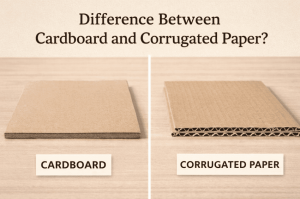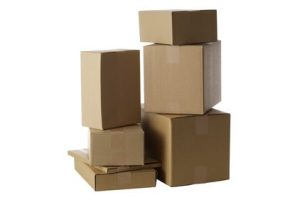Here on the Racer Boxes blog, we always talk about the importance of the ideal cardboard box for each product. After all, there is no point in being careful at the time of production if your product arrives damaged at the home of the person who bought it.
That’s why packaging is essential! In addition, we are currently living in a scenario of increasing and strengthening online shopping – people have never bought so much in virtual stores! And that goes for all types of products – including the heaviest ones. That’s exactly what we’re going to talk about today: tips on how to send heavy objects so that they remain protected until their final destination.
Cardboard Boxes Flute
Before moving on to what matters, it is essential to talk about a topic closely linked to this subject: the flute. Cardboard boxes are made of corrugated cardboard, which consists of three layers: an inner layer (liner), a middle layer (flute), and an outer layer (liner). The flute is the middle layer of the corrugated cardboard, and it is made of paper that has been fluted or corrugated to create a series of arches. The flutes are usually made of paper that has been recycled from old newspapers or other sources.
The flutes provide the structural strength and rigidity of the cardboard box. They are responsible for holding the box together and supporting the weight of the contents. The size of the flute (e.g. A-flute, B-flute, etc.) and the spacing of the flutes can affect the strength and durability of the box.
Cardboard boxes with larger flutes (such as A-flute) are generally stronger and more rigid, while boxes with smaller flutes (such as E-flute) are lighter and more flexible. The type of flute you choose will depend on the weight and size of your products, as well as the type of shipping method you will be using.
Cardboard Boxes for Heavy Products
Now that you know what flute is, let’s talk about the boxes. When packaging heavy objects, it’s important to use a box that is strong enough to support the weight of the object and protect it during shipping. Here are a few tips for packaging heavy objects:
- Use a sturdy box: Choose a box that is made of strong, durable corrugated cardboard and is large enough to accommodate the size of your object. Avoid using boxes that are damaged or have weak spots, as they may not be able to support the weight of the object.
- Use appropriate packaging materials: In addition to the box, you will also need to use appropriate packaging materials to protect the object during shipping. This may include bubble wrap, foam sheets, or packing peanuts. Make sure to use enough packaging material to securely hold the object in place and prevent it from moving around inside the box.
- Use reinforced tape: Use reinforced tape (such as packing tape or duct tape) to seal the box and reinforce the bottom and corners of the box. This will help to prevent the box from tearing or breaking open during shipping.
- Label the box: Clearly label the box as “heavy” or “fragile” to alert the shipper to handle it with care. This can help to reduce the risk of damage during shipping.
Finally, remember that it is not enough to just choose a box whose size accommodates the product well, it also needs to be resistant enough. You need to know the exact weight and size of what you’re shipping – that’s why we explained the flute issue above.
Always inform your box supplier of this detail before ordering packaging – they will be able to assist you in choosing the best type of cardboard box for your case. Also, run tests beforehand to see if everything is running as expected.
Cardboard Boxes in Vancouver
If you are looking for a Canadian cardboard box supplier, please contact us. We have years of experience in the field and can either help you with choosing the ideal model or deliver your packages in a few days. To contact us, click here.





Recent Comments